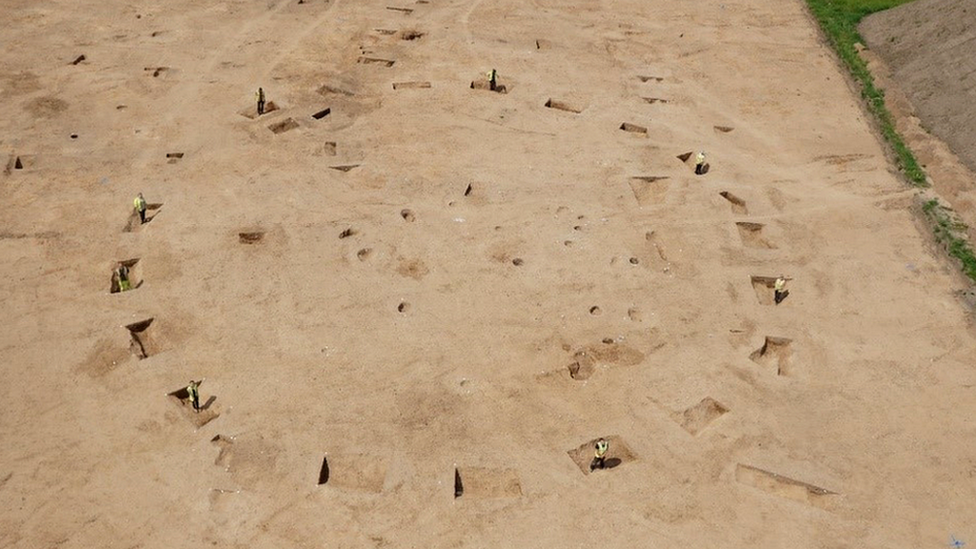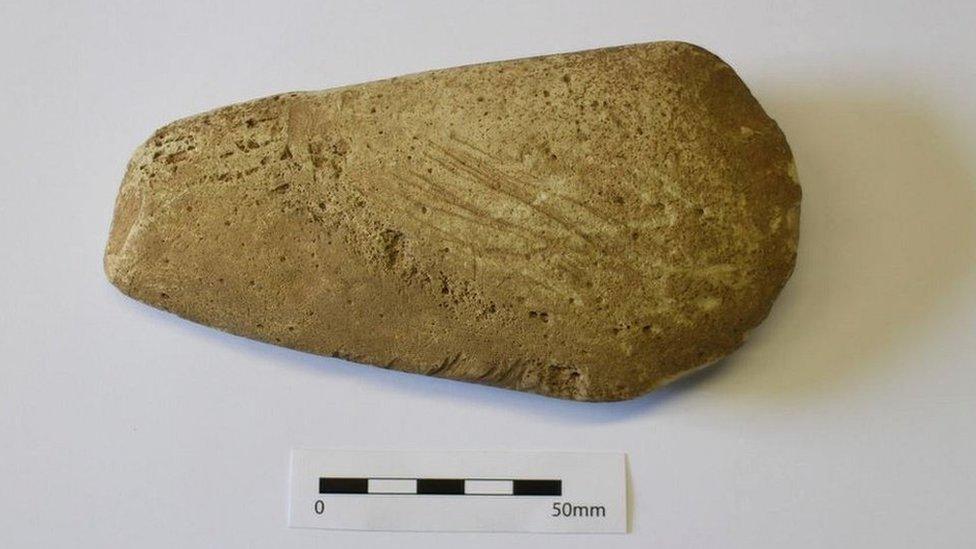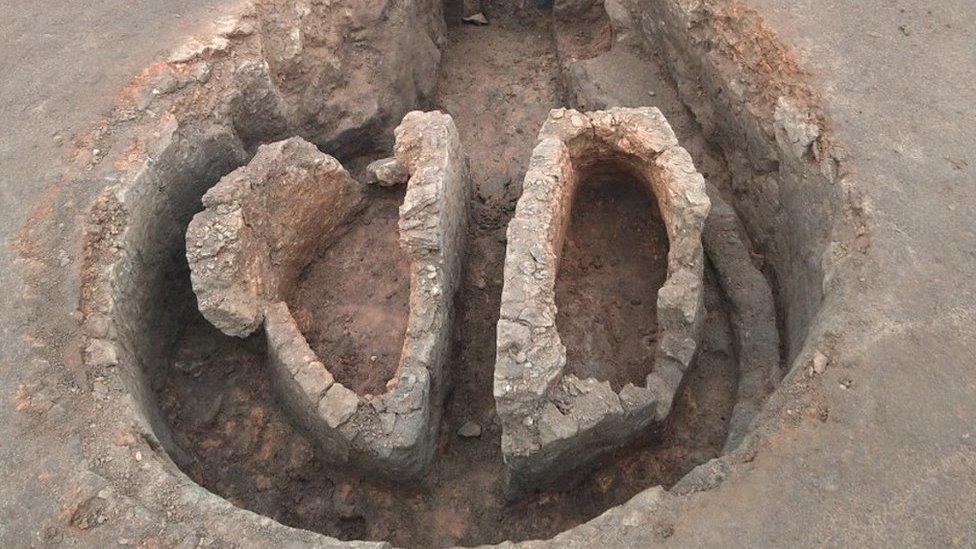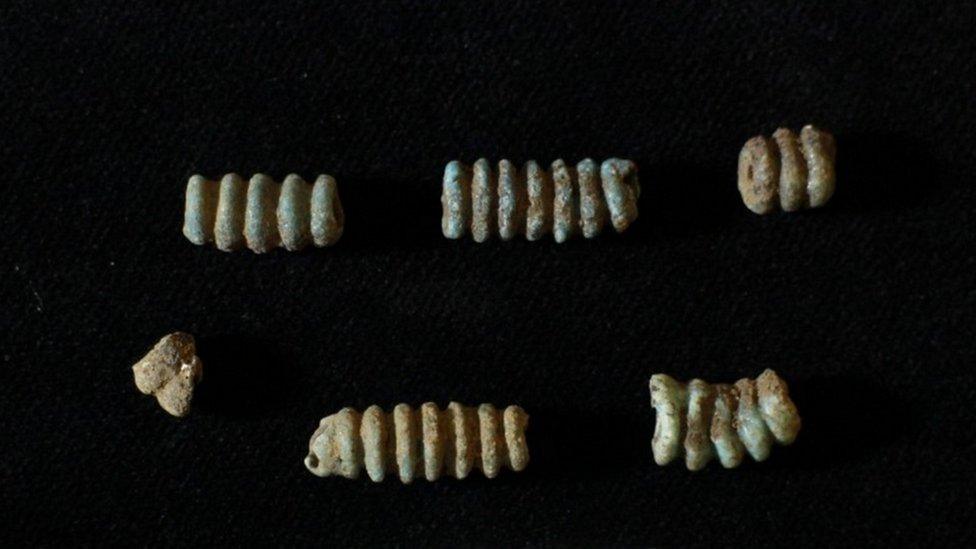Henge monument and Roman kilns found at housing dig
- Published

Archaeologists stand in excavated sections of the henge monument ditch
The remains of what is believed to be a henge monument and Roman pottery centre have been unearthed on the site of a new development in Nottinghamshire.
Archaeologists called in to survey the Middlebeck housing site near Newark said they uncovered evidence of human activity going back 12,000 years.
Their finds included 73 Roman kilns, which they said made it a pottery site of "national importance".
A circular ditch dotted with upright timbers was also found near a spring.

A stone axe head may have been kept and reused for about 3,000 years
Middlebeck is a 694-acre urban extension to the south of Newark, which will contain more than 3,000 homes and be served by a £100m link road.
Historically, the area is famous for its links to the 17th Century Civil War, but previous excavations have also found traces of occupation from 12,000 years ago, near the end of the ice ages, but the dig by Oxford Archaeology found only sparse traces of both time periods.
The first major find was the enclosure, which is dated to about 3,300 BC and contained the remains of a series of internal posts and pits, possibly forming one or more concentric arcs of upright timbers.

The kilns represent a significant - and previously unknown - Roman production centre
It was also situated at the head of a spring, which the archaeologists said might mean it had cultural and religious significance to prehistoric people.
Another significant find was a polished stone axe head from Langdale, Cumbria, probably of a similar date to the enclosure.
However it was found buried with Iron Age pottery, from about 3,000 years later and bore marks likely to show its re-use as a whetstone, suggesting it had been valued for generations.

Beads from a cremation burial indicate influences from continental Europe dating to around 1,800 BC
The site also contained 35 cremation burials from the Bronze Age, necklace beads of a similar date, and traces of a sizeable Iron Age farming community.
But one of the biggest surprises was the 73 "remarkably well-preserved" Roman kilns and "vast quantity" related pottery.
A spokesman for Oxford Archaeology said: "This number of kilns is largely unprecedented, certainly in the Newark area, and more widely across the Midlands.
"It probably represents a previously unknown pottery production centre that is of regional, if not national, importance."

Follow BBC East Midlands on Facebook, external, on X, external, or on Instagram, external. Send your story ideas to eastmidsnews@bbc.co.uk, external.
- Published15 October 2023

- Published8 March 2023
